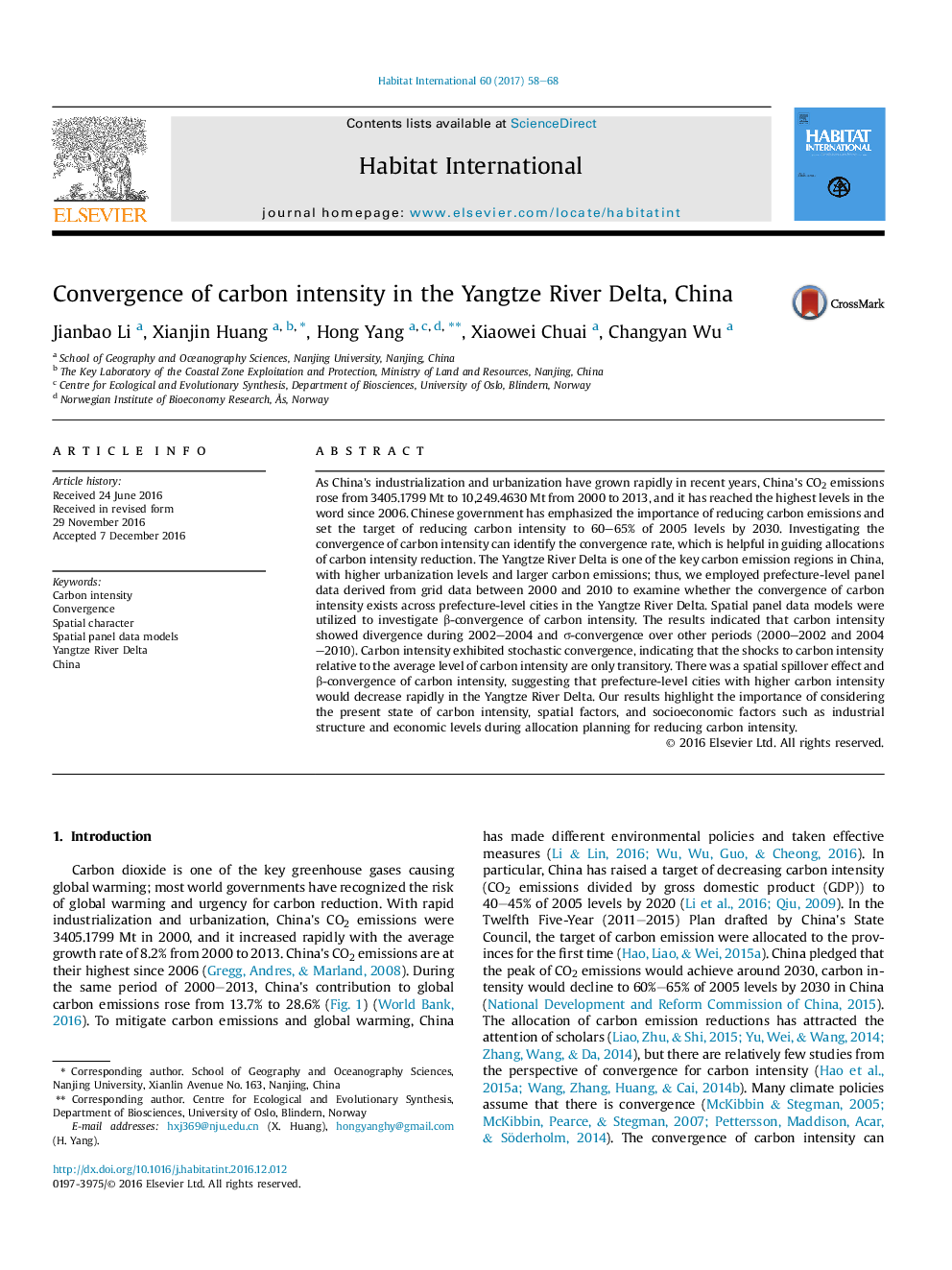| کد مقاله | کد نشریه | سال انتشار | مقاله انگلیسی | نسخه تمام متن |
|---|---|---|---|---|
| 5114714 | 1484484 | 2017 | 11 صفحه PDF | دانلود رایگان |
عنوان انگلیسی مقاله ISI
Convergence of carbon intensity in the Yangtze River Delta, China
ترجمه فارسی عنوان
همگرایی شدت کربن در دلتای رودخانه یانگ تسه، چین
دانلود مقاله + سفارش ترجمه
دانلود مقاله ISI انگلیسی
رایگان برای ایرانیان
کلمات کلیدی
شدت کربن، همگرایی، شخصیت فضایی، مدل داده های پانل فضایی، دلتا رودخانه یانگ تسه، چین،
موضوعات مرتبط
علوم انسانی و اجتماعی
علوم اجتماعی
توسعه
چکیده انگلیسی
As China's industrialization and urbanization have grown rapidly in recent years, China's CO2 emissions rose from 3405.1799 Mt to 10,249.4630 Mt from 2000 to 2013, and it has reached the highest levels in the word since 2006. Chinese government has emphasized the importance of reducing carbon emissions and set the target of reducing carbon intensity to 60-65% of 2005 levels by 2030. Investigating the convergence of carbon intensity can identify the convergence rate, which is helpful in guiding allocations of carbon intensity reduction. The Yangtze River Delta is one of the key carbon emission regions in China, with higher urbanization levels and larger carbon emissions; thus, we employed prefecture-level panel data derived from grid data between 2000 and 2010 to examine whether the convergence of carbon intensity exists across prefecture-level cities in the Yangtze River Delta. Spatial panel data models were utilized to investigate β-convergence of carbon intensity. The results indicated that carbon intensity showed divergence during 2002-2004 and Ï-convergence over other periods (2000-2002 and 2004-2010). Carbon intensity exhibited stochastic convergence, indicating that the shocks to carbon intensity relative to the average level of carbon intensity are only transitory. There was a spatial spillover effect and β-convergence of carbon intensity, suggesting that prefecture-level cities with higher carbon intensity would decrease rapidly in the Yangtze River Delta. Our results highlight the importance of considering the present state of carbon intensity, spatial factors, and socioeconomic factors such as industrial structure and economic levels during allocation planning for reducing carbon intensity.
ناشر
Database: Elsevier - ScienceDirect (ساینس دایرکت)
Journal: Habitat International - Volume 60, February 2017, Pages 58-68
Journal: Habitat International - Volume 60, February 2017, Pages 58-68
نویسندگان
Jianbao Li, Xianjin Huang, Hong Yang, Xiaowei Chuai, Changyan Wu,
